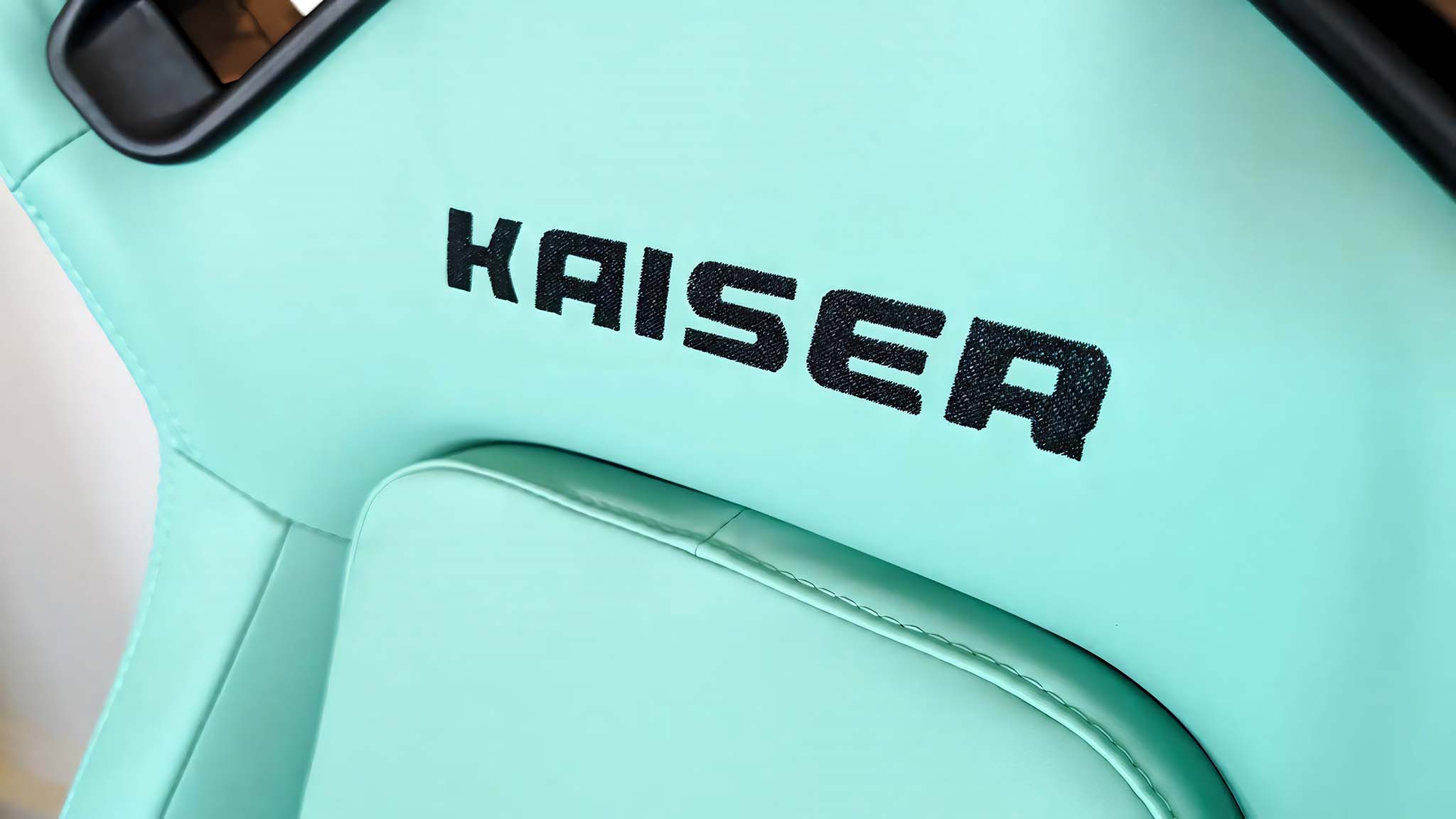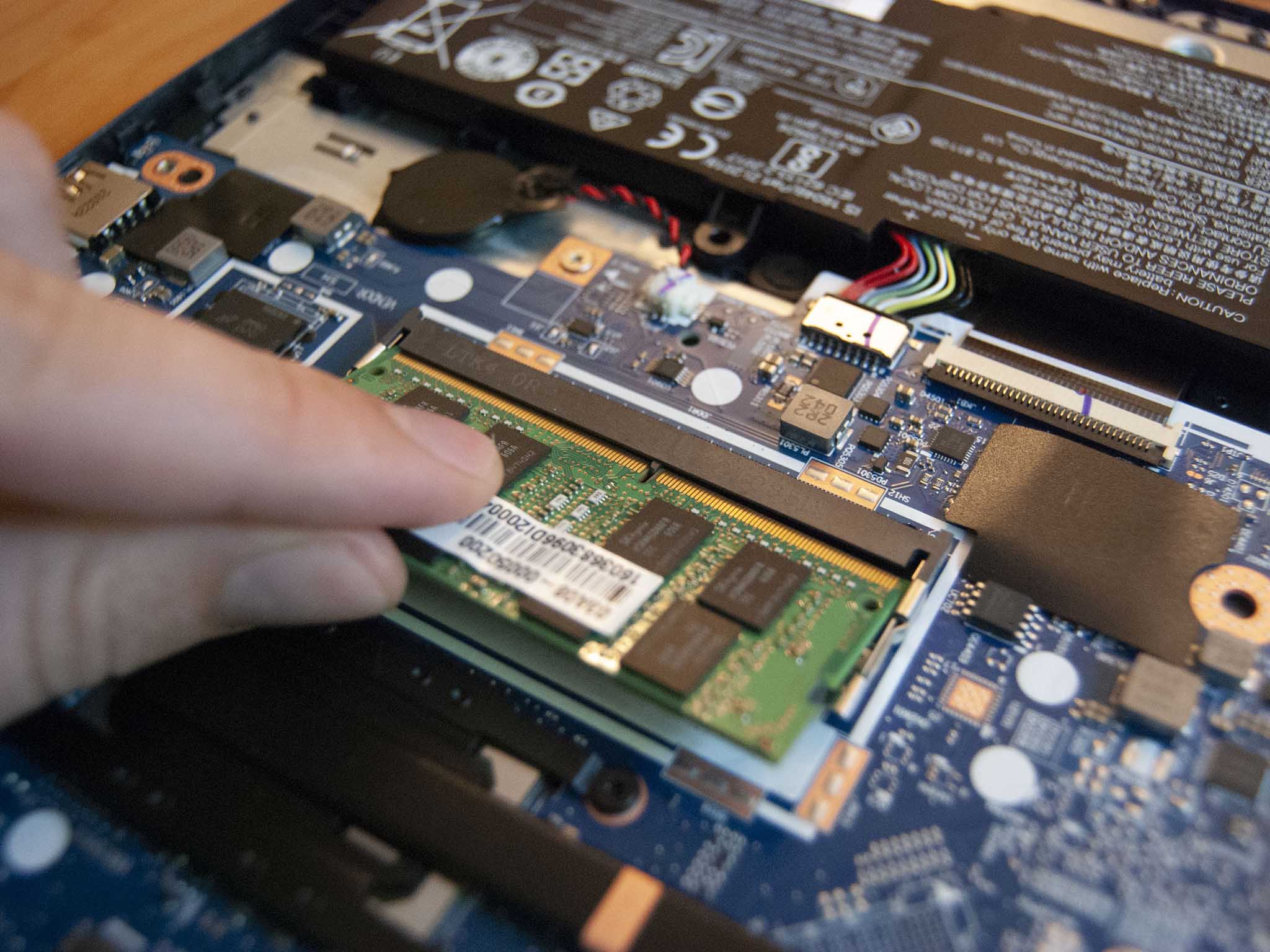
Lenovo's IdeaPad 3 15 is a budget laptop with upgradeable RAM and storage, making it much easier to keep up to date in future years. I already wrote a guide on how to upgrade the SSD in the IdeaPad 3 15, and it's now time to tackle the memory. I'll guide you through the required steps and offer some upgrade hardware recommendations to make the process as easy as possible.
How to upgrade RAM in the Lenovo IdeaPad 3 15
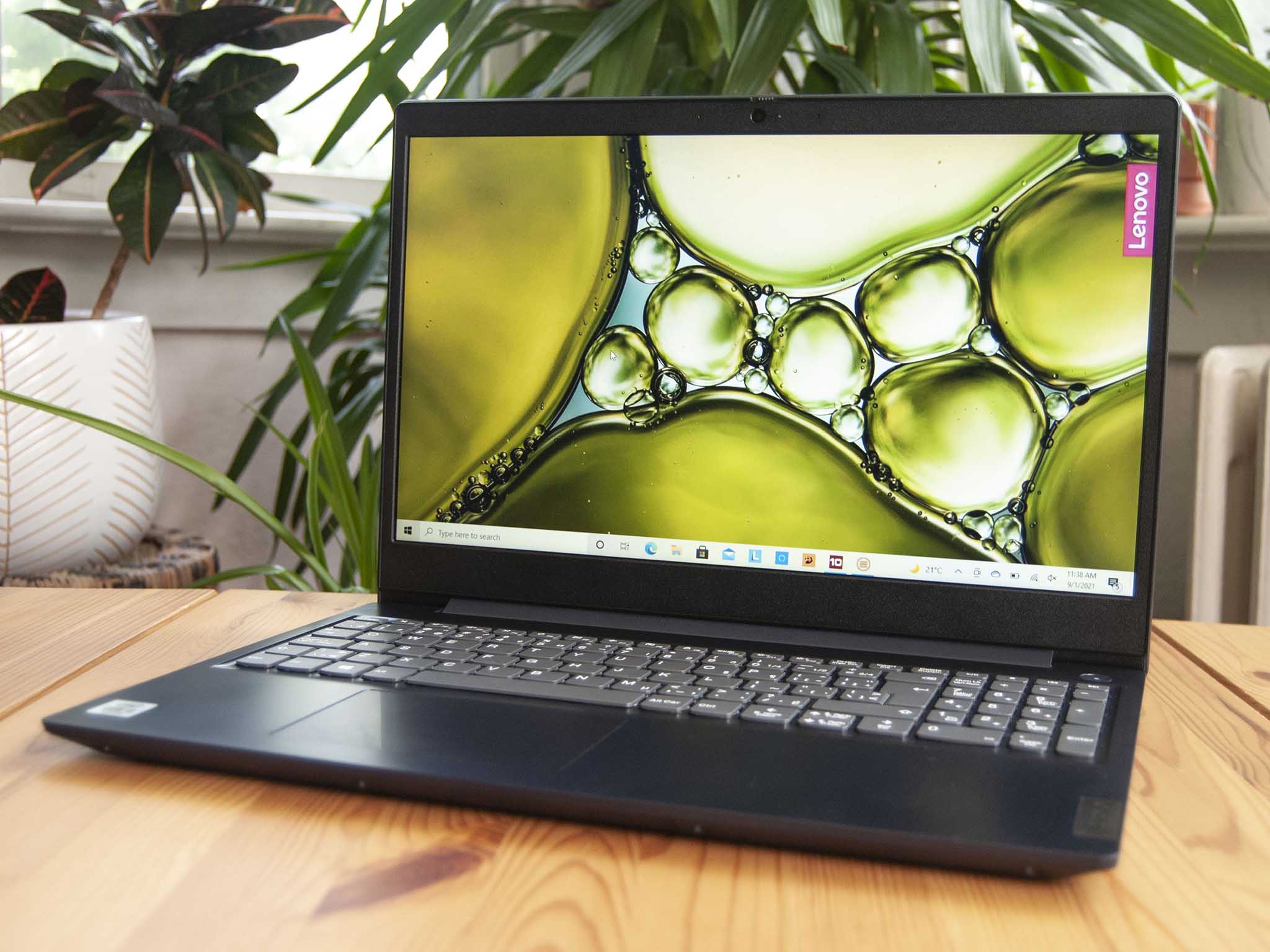
The IdeaPad 3 15 (model number 15IML05) is fairly easy to upgrade, though it only offers access to one SODIMM RAM slot. The laptop comes with 4GB of RAM soldered to the board no matter what, with another stick installed in an easy-access manner for dual-channel performance.
The laptop uses DDR4-2666MHz RAM from the factory, which is quite easy to find and match up. It's up to you how much RAM you want to add to the laptop, but I don't think going above 12GB makes much sense for a 10th Gen Core i3 processor. You can check out our ultimate RAM buyer's guide for a deeper dive into the subject.
For this case, I recommend checking out something like XPG's Premier RAM. It's about as affordable as memory gets, costing about $32 for an 8GB stick. With the 4GB soldered to the board, that's a total of 12GB.
Upgrading RAM shouldn't cause system issues, but it's never a bad idea to back up all your data before tinkering. Our guide with six easy and effective ways to back up your PC has all the information you need to get the job done.
Once your data is safe and you have a new stick of RAM in hand, clear out a well-lit workspace, power down your IdeaPad 3 15, and follow these steps.
- Unscrew the 10 fasteners on the bottom of the laptop using a Phillips-head screwdriver. Note that the front screws are shorter than the rest. Also, keep them separated for reassembly.
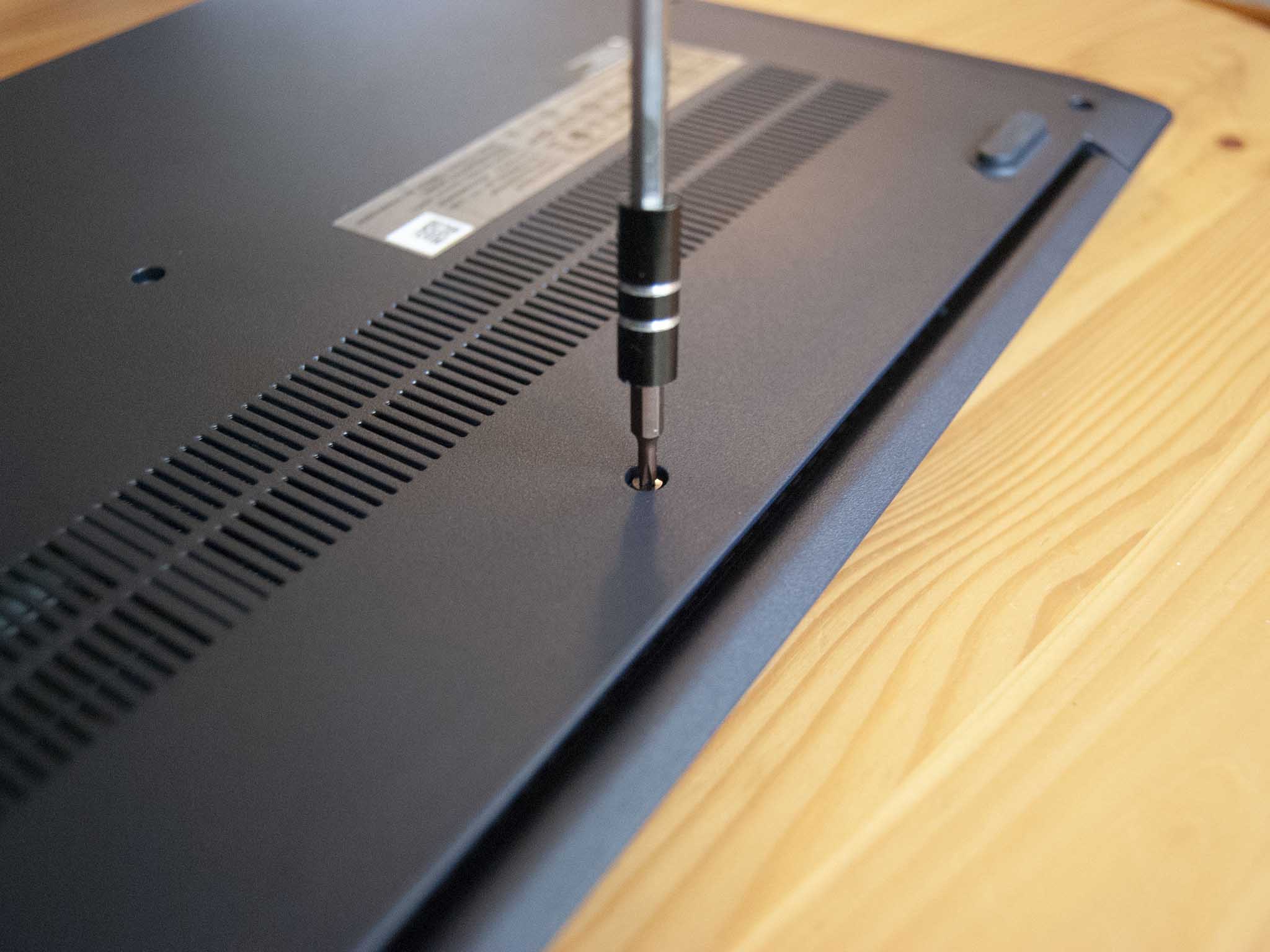
- Pry up the bottom panel using a pry tool or guitar pick. Start at a corner or loose point and work your way around carefully to prevent damage.

- Unfasten the metal arms on either side of the RAM to release it.
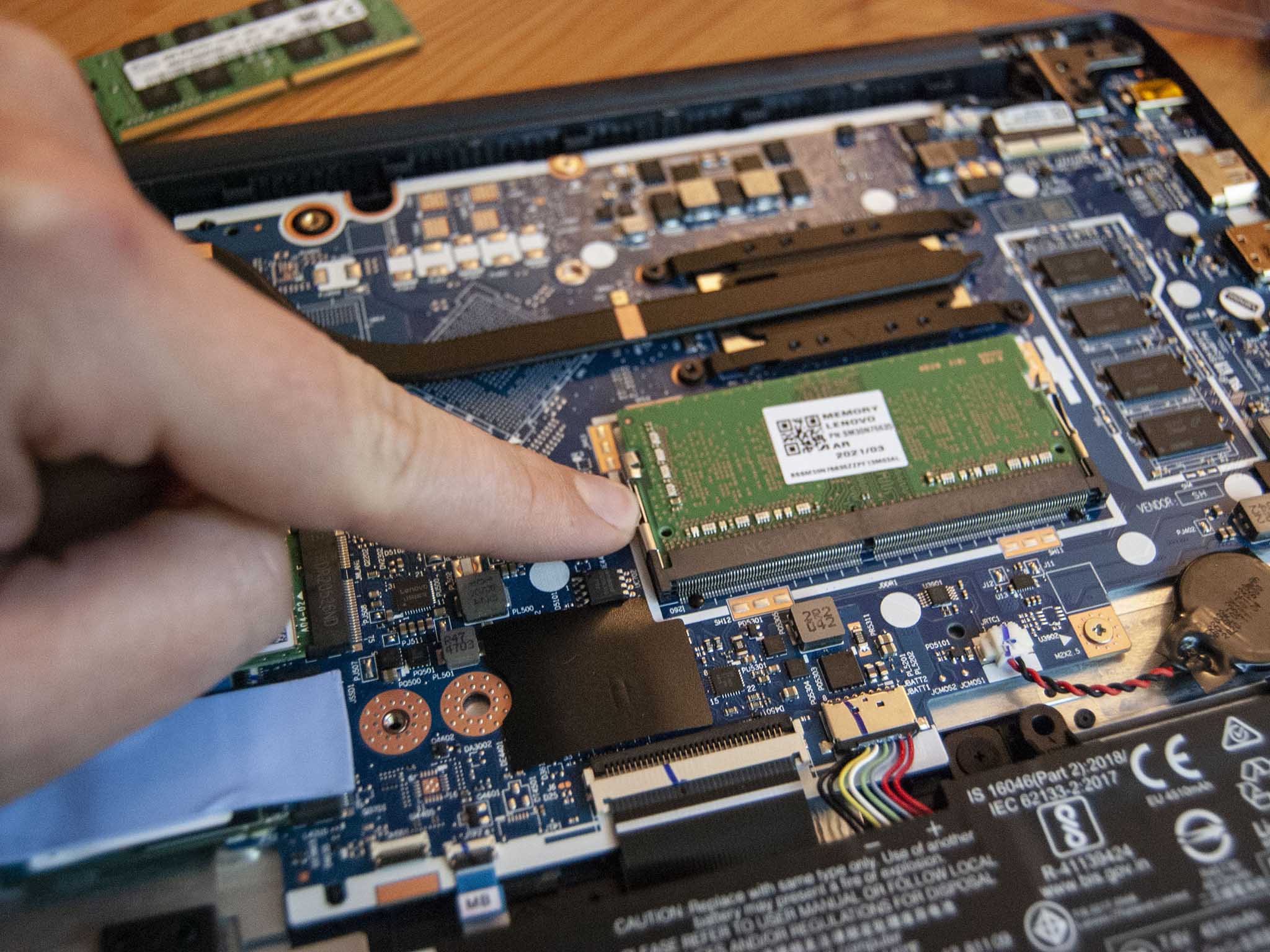
- Pull the RAM away from the slot. Do not lift straight up as it will cause damage.
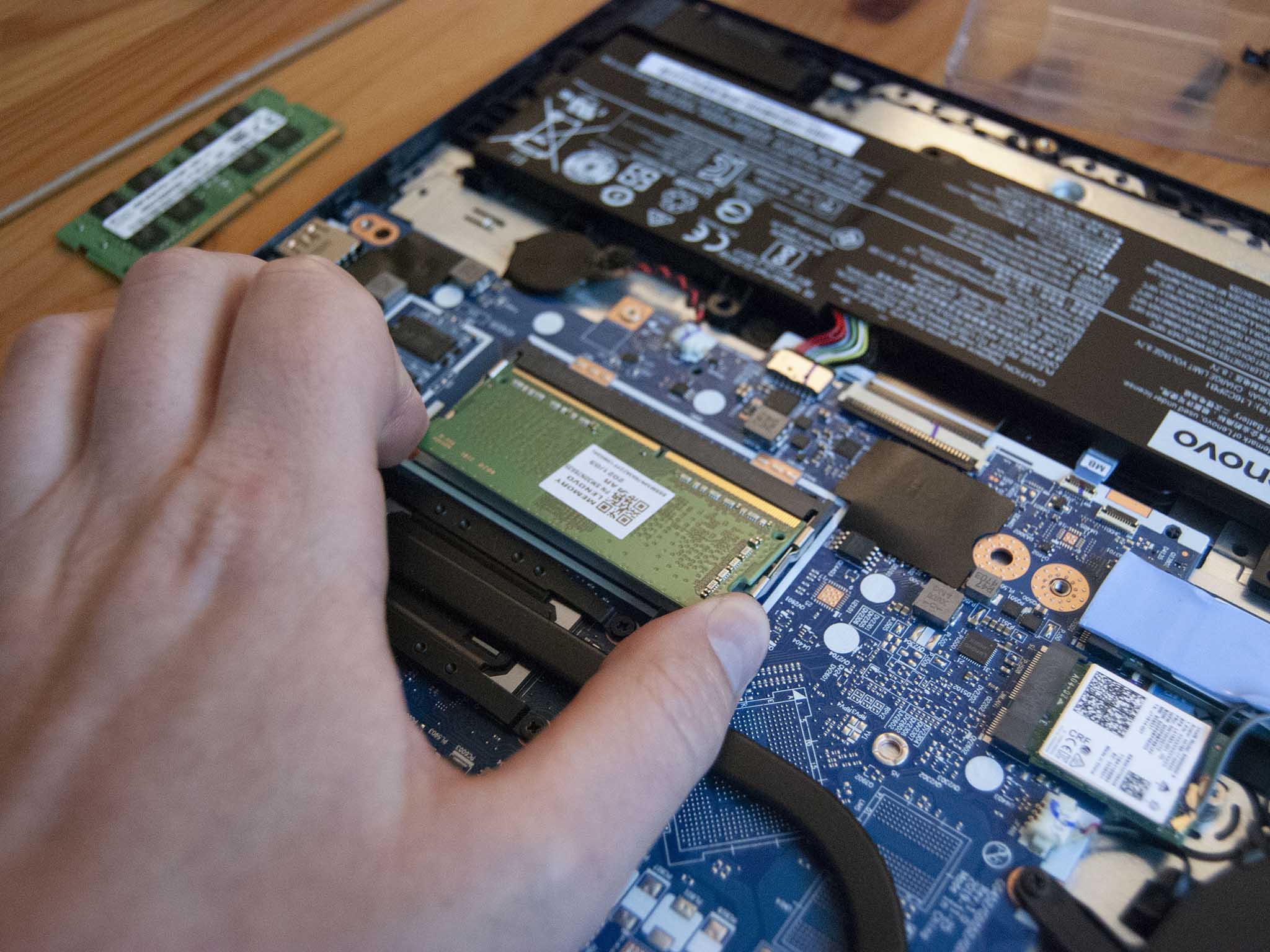
- Slide the new RAM into the slot at about a 25-degree angle. Both the RAM and the slot are keyed and will only fit together one way.

- Press down on the RAM until the metal arms click back into place.
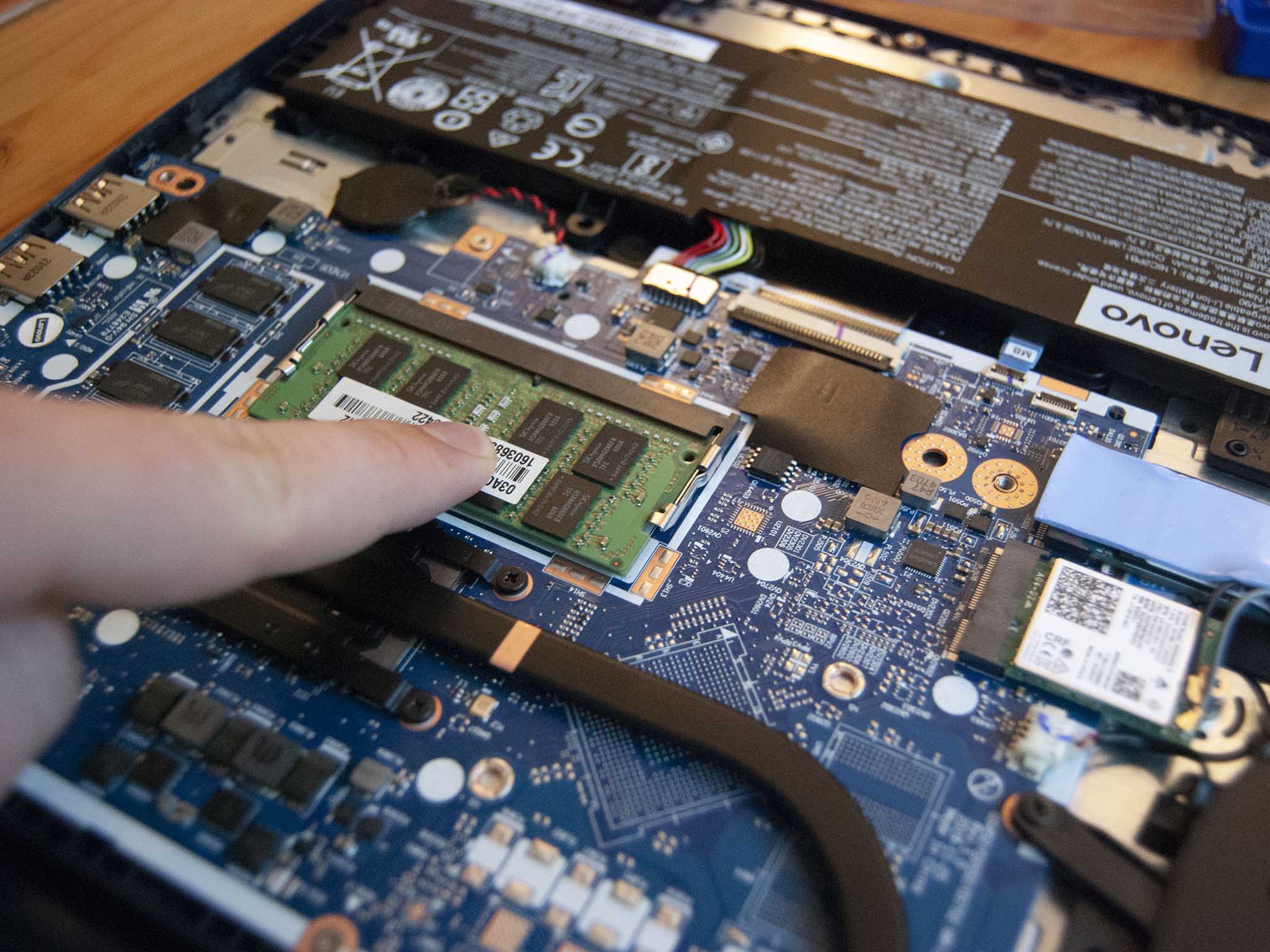
- Replace the bottom panel by applying pressure around the edges and middle.
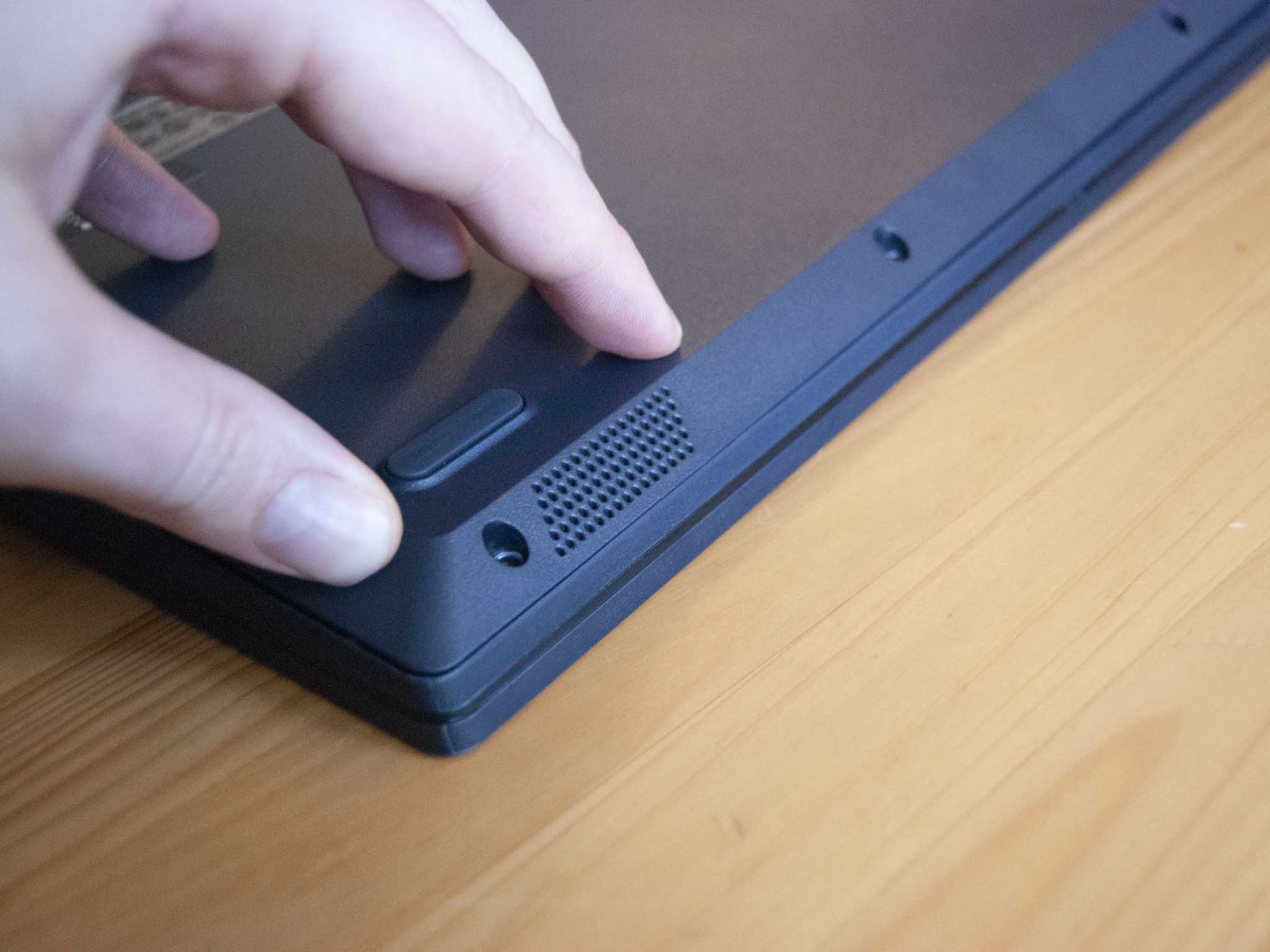
- Screw in the 10 fasteners on the bottom of the laptop.
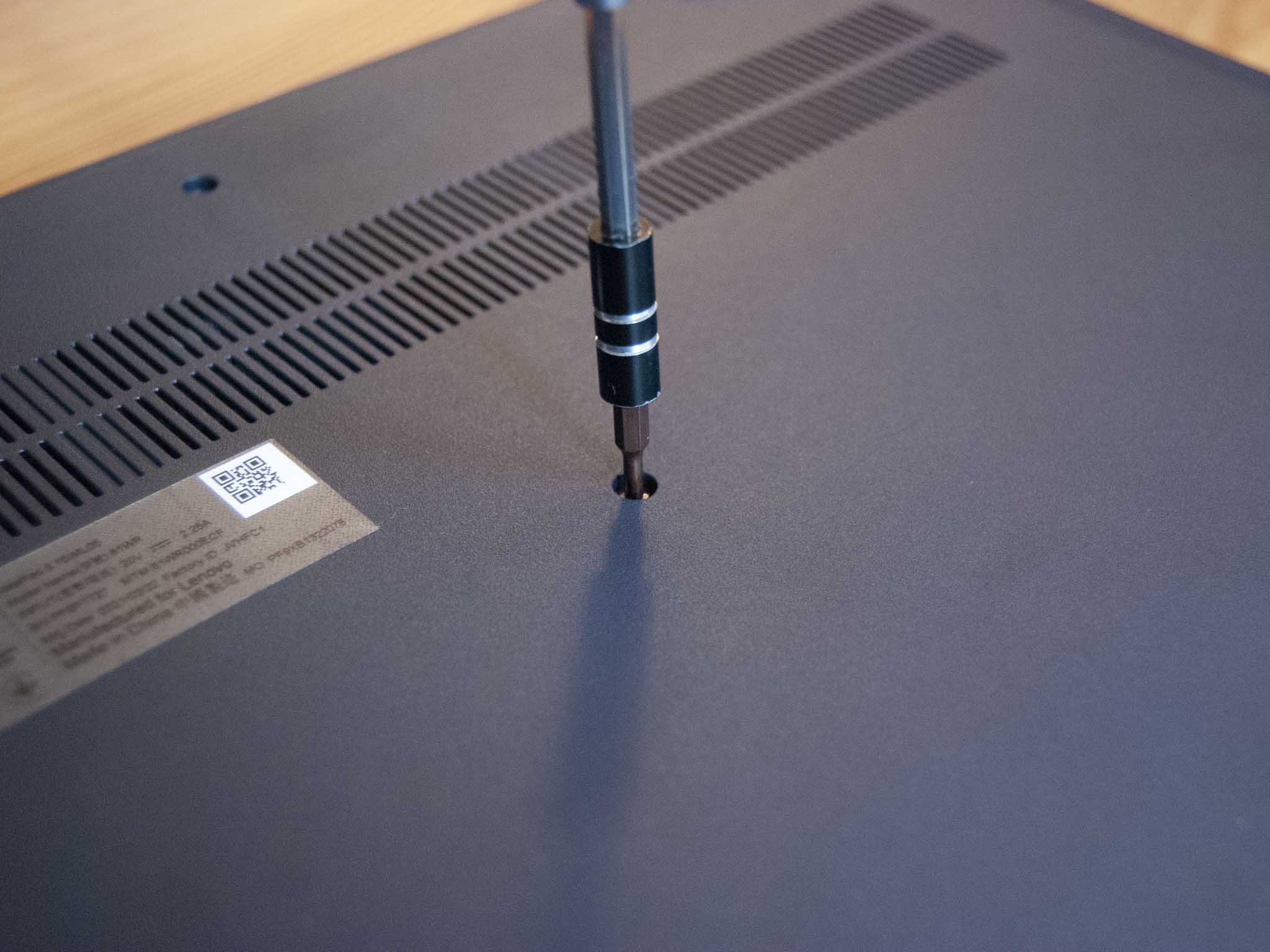
You're now free to power on your IdeaPad 3 15 to see whether the RAM upgrade was a success.
Get the Windows Central Newsletter
All the latest news, reviews, and guides for Windows and Xbox diehards.
- Right-click the Start button.
- Click System.
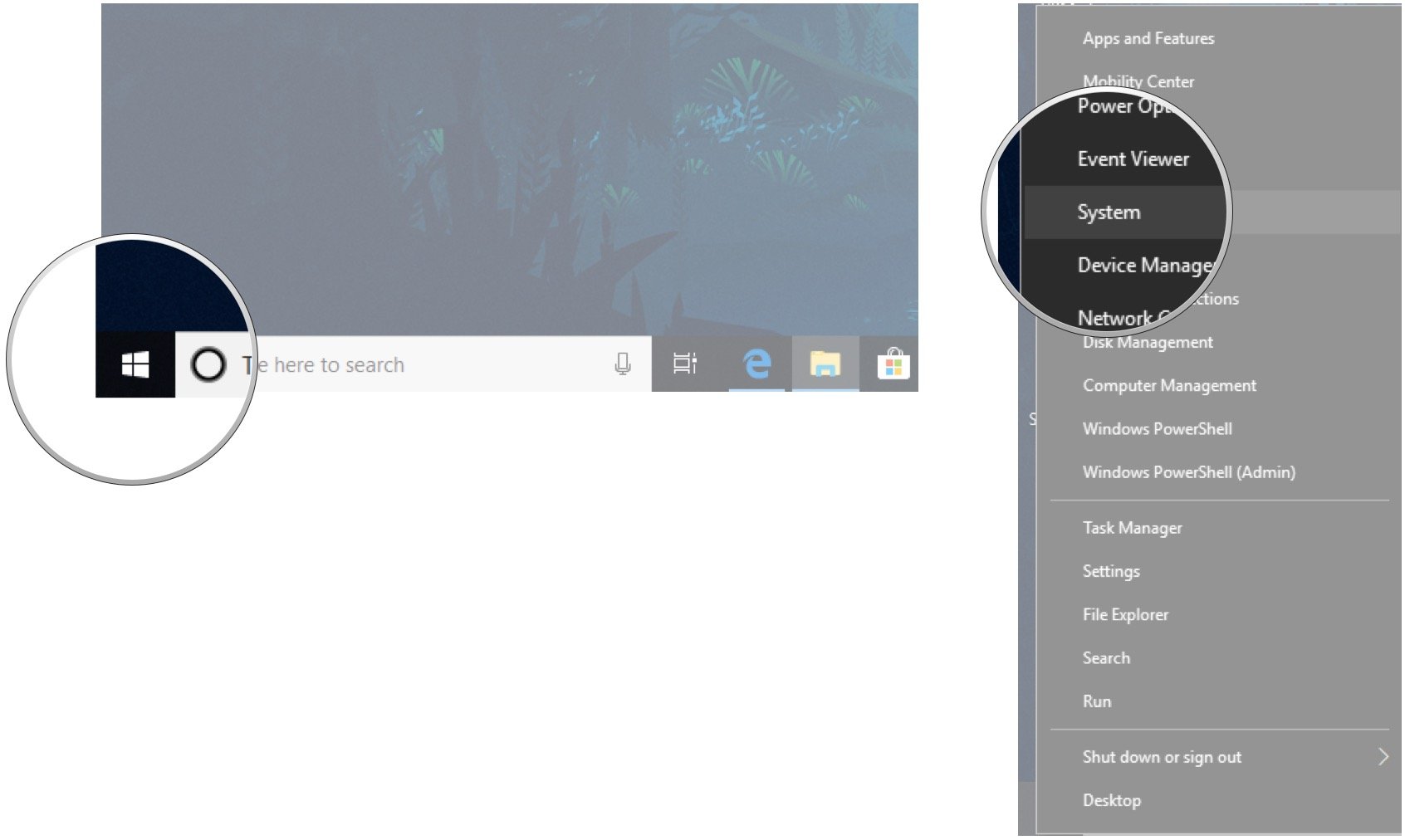
You should now be able to see the total amount of installed RAM in the Device specifications section. As long as it matches the total amount you have installed, your upgrade was a success.
Our top hardware picks
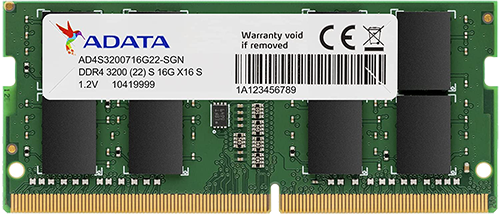
This affordable DDR4-2666MHz RAM is available in 8GB, 16GB, and 32GB sticks. I recommend grabbing an 8GB module for upgrading the IdeaPad 3 15 with Core i3 CPU.
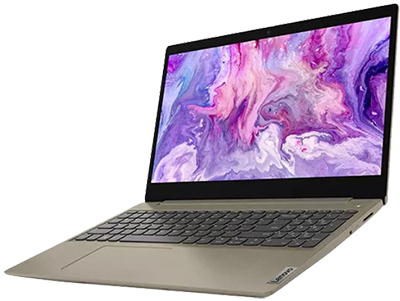
The IdeaPad 3 15 is a sub-$500 laptop ideal for light productivity and schoolwork around the house. Its RAM and SSD are upgradeable to keep it relevant longer into the future. Check out the best budget laptops for more options.
Additional equipment
This equipment isn't absolutely necessary, but it can make your life a whole lot easier.
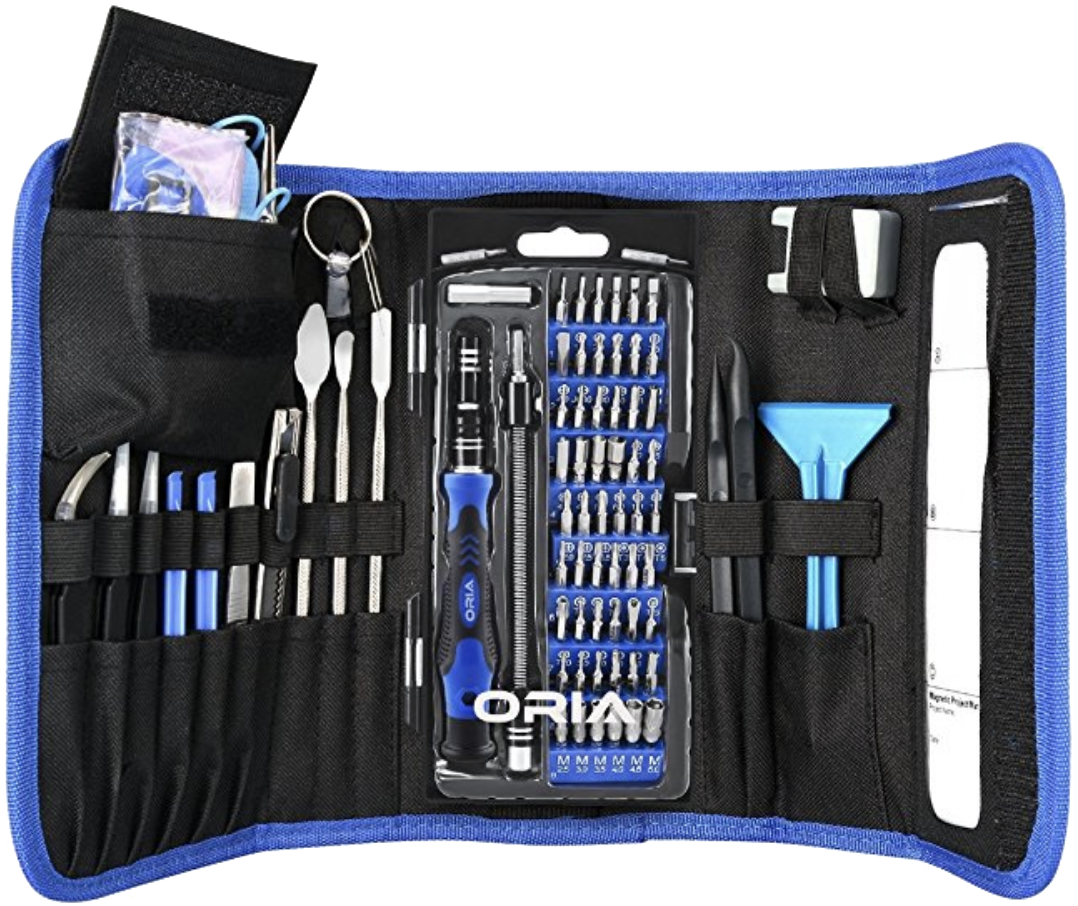
ORIA PC toolkit ($29 at Amazon)
Having the proper gear to work on your PC will always make the job much easier. Here you get a plethora of tools contained in a portable case.
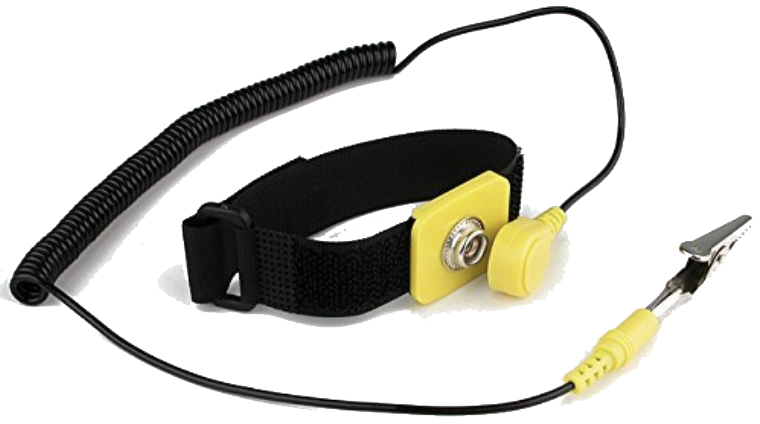
Rosewill anti-static wristband ($7 at Amazon)
Static electricity can damage sensitive PC parts, so remove the risk with an anti-static wristband. Fasten it around your wrist and clip it onto your PC for peace of mind.

Cale Hunt brings to Windows Central more than eight years of experience writing about laptops, PCs, accessories, games, and beyond. If it runs Windows or in some way complements the hardware, there’s a good chance he knows about it, has written about it, or is already busy testing it.
